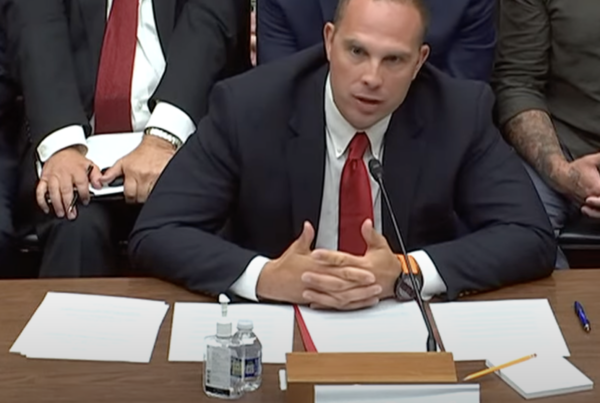Chances are you know someone who has been impacted by Alzheimer’s disease. Currently, an estimated 6.7 million people in the United States are suffering from the disease, which has no cure.
Just this past December, a $226 million increase in annual federal funding for Alzheimer’s research was signed into law. This has allowed for new findings to emerge about the disease, which can lead to more knowledge about reducing risk.
A new study has come out that took a deep look into which counties across the nation are most impacted by Alzheimer’s. California, Florida and Texas where the states with the highest number of people with the disease, with Texas’ border counties boasting higher rates in older adults than in other parts of the state.
Dr. Kumar Rajan is the lead author of this study and professor in the Department of Internal Medicine at Rush Medical College in Chicago. He joined Texas Standard to talk about the study. Listen to the interview above or read the transcript below.
This transcript has been edited lightly for clarity:
Texas Standard: Your study looked at the prevalence of Alzheimer’s in all 50 states. What’s the benefit of knowing where we see higher rates of the disease?
Dr. Kumar Rajan: So one of the benefits is to be able to know where the disease is pretty much focused and concentrated. And that will help us develop some preventive programs that areas can come up with that are helping in preventing the disease going forward.
What do we know right now about how the environment impacts brain aging?
Environment is one of the important factors that does impact brain aging. There is some literature that suggests that people who live in areas where there are higher levels of pollution and environmental exposures also have higher risk for the disease moving forward.
Could you speak to the specifics in Texas? What did you find when it came to the highest rates of Alzheimer’s here?
So Texas is a fairly large state and it has quite a number of counties in it, if I’m not mistaken. So what we found is that Texas in general was one of the top states in terms of the people who were living with Alzheimer’s disease. In total, Texas had about 3,873,000 people who actually were in the older age group who are 65 years and older who lived in Texas.
And it also had a substantial number of the Hispanic population who also have higher risk for the disease moving forward. So in terms of the number of older people who are living in the state and the number of minorities in the state, put Texas into one of the top five states with the largest number of people with Alzheimer’s disease.
Is that one explanation as to why areas along the border may have seen higher rates as well, because of the connections between race and ethnicity and the likelihood of a person getting Alzheimer’s disease?
That is correct, at least for this study.
We did look at demographic characteristics very closely and we used the National Center for Health Statistics in trying to map each county with its population characteristics and what that means to the county’s risk for the disease moving forward.
But we also have other studies that we are looking at that can potentially help us understand a little better what are making these counties at higher risk beyond what are the demographic characteristics of the counties.
So I think that is the study that we are also looking at next – trying to understand, can we go beyond what we already have? Are there factors modifiable that can help us prevent the disease moving forward?
Would that be perhaps going back to what we were talking about with environmental factors? Or are there guesses that folks have out there that we haven’t even really fully explored just yet?
That is correct, environmental factors is one of them.
But we are also looking at several other factors: some geared towards socioeconomic conditions like educational attainment, sensory loss, hearing impairment, vision impairment, psychological health like depression, loneliness; social health, like low social contact and social engagement. And also if there are any regions with higher traumatic brain injuries, which are linked and associated with higher risk for Alzheimer’s disease.
And we are also going to be looking at several chronic health conditions such as hypertension, stroke, diabetes; and also looking at lifestyle factors like how is people’s nutrition and what is the alcohol consumption in those areas?
So we’ll be looking at several factors that can essentially increase the potential for Alzheimer’s disease and that’s sort of where we will be going next.














